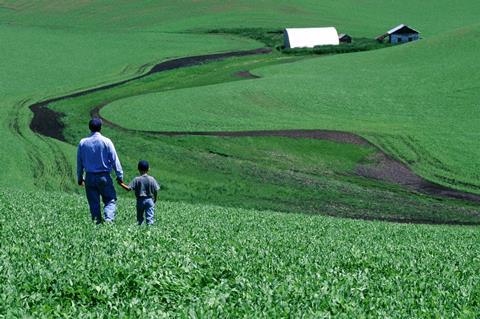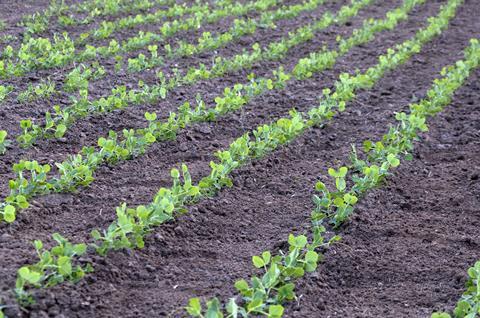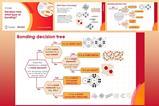Can soil help address climate change?

When we talk about carbon storage, we often talk about locking it away in forests or planting more trees in our cities. But did you know that around 80% of the carbon in land-based ecosystems is actually found in the ground? So addressing climate change also means talking about how to stop carbon being released from our soils.
Soils take up carbon mainly through plants, which get their energy from carbon dioxide via photosynthesis. The carbon becomes part of the plant material itself, such as the roots and leaves. When these die, the most readily decomposed parts, containing what is known as ‘labile carbon’, create a feeding frenzy among soil bacteria and fungi. Like all organisms, explains soil ecologist Sabine Reinsch from the UK Centre for Ecology & Hydrology (CEH) in Bangor, microbes need carbon for energy. ‘Microbes will eat these forms of carbon and then you have the carbon stored in the biomass of the microbes,’ she says. Less easily decomposed forms can become (chemically) bound to grains of soil and form part of bigger clumps called aggregates, where the carbon can be stored for years.
In your class
Climate change provides an excellent opportunity to incorporate global citizenship into science lessons. Methods for reducing carbon emissions such as cutting down on the use of fossil fuels or by eating less meat are relatively well known to students. This article provides an alternative perspective and introduces soil as a carbon store. The link to ecology makes this article of interest to chemists and biologists alike.
Can we stop carbon from escaping?
Because of the crucial role of plants in carbon cycling, keeping the ground covered with so-called ‘cover crops’ – even on fallow farmland – is one way to keep hold of soil’s organic content and prevent carbon from escaping into the atmosphere. ‘You avoid bare soil,’ says Sabine. ‘You grow plants all year round, even if you don’t have a crop.’

But how do we know how much carbon is actually in the soil? And how do different land uses and soil treatments compare in terms of helping the soil to absorb it? ‘We know pretty well from our long-term experiments, because they’ve been going on for 177 years,’ reveals Keith Goulding, a soil chemist at Rothamsted Research in Harpenden. Here, scientists have been growing wheat on the same field since 1843 and grass on the same parkland since 1856. As you might expect, establishing permanent grassland allows carbon to build up – but, ‘if you plough it, you lose it,’ says Keith.
Results from the wheat field experiment show that it’s possible to raise the carbon content by adding organic matter like manure, but the capacity of soil to soak up carbon eventually maxes out. Scientists working on this experiment test ‘cores’ of soil, from the top layer down to 23 centimetres deep. Since 1992, they’ve analysed soil organic carbon by burning soil and measuring the carbon content of the combustion gases. According to their findings, soil organic carbon has never risen more sharply than in the first 20 years of the experiment, when it averaged one tonne per hectare per year. By 2005, this average had plummeted to 0.2 tonnes over the same period.
Download this
Research and debate activity, for age range 14–16
In this activity, students develop their speaking and listening skills by debating the following statement: ‘Improved soil management is the best way to reduce carbon dioxide levels in the atmosphere’. After researching some of the ways scientists are working to reduce carbon dioxide in the atmosphere, students hold a constructive conversation scaffolded by the use of Talk triplets as MS Powerpoint or pdf.
In this activity, students develop their speaking and listening skills by debating the following statement: ‘The rise in the average global temperature on Earth is the result of human activity’. After researching evidence both for and against the statement, students hold a constructive conversation scaffolded by the use of Talk triplets.
Downlad the research and debate activity from the Education in Chemistry website: rsc.li/2vYSnnf
What can we do?
Studies conducted over a number of years suggest that, in the UK, we don’t have much room to improve our farmland carbon storage by reducing ploughing or adding organic matter. A global initiative, 4 per 1000, aims to promote the capture of an extra four parts per mille (‰) of organic carbon in soils every year through better soil management. But, having looked at data from their long-term experiments in order to work out how fast soil carbon could be accumulated, Keith and his colleagues argue that this goal is probably too ambitious. Also, while it could increase food production and farmers’ incomes, it wouldn’t have a major impact in terms of climate change. Still, if we are to meet the target of limiting global warming to 1.5ºC, as agreed in 2018 in Paris, then carefully managing soil carbon in farmlands could form an important part of a package of mitigation measures, suggests a recent study.
Studies conducted over a number of years suggest that, in the UK, we don’t have much room to improve our farmland carbon storage by reducing ploughing or adding organic matter. A global initiative, 4 per 1000, aims to promote the capture of an extra four parts per mille (‰) of organic carbon in soils every year through better soil management. But, having looked at data from their long-term experiments in order to work out how fast soil carbon could be accumulated, Keith and his colleagues argue that this goal is probably too ambitious. Also, while it could increase food production and farmers’ incomes, it wouldn’t have a major impact in terms of climate change. Still, if we are to meet the target of limiting global warming to 1.5ºC, as agreed in 2018 in Paris, then carefully managing soil carbon in farmlands could form an important part of a package of mitigation measures, suggests a recent study (go.nature.com/38eoA8s).

Going deeper
Meanwhile, Sabine and her CEH colleagues have embarked on an in-depth study of carbon storage across different UK landscapes. She explains that most studies only consider how carbon is stored in the topsoil, up to around 30 centimetres. ‘But we know that carbon is also stored below that depth,’ she says. ‘So one aspect we are trying to investigate is how carbon is stored differently in those deeper layers – what are the processes and how are they different from the top layers?’ To understand how the carbon stores vary between landscapes, the team runs transects (sample lines) between grasslands and forests, for example, taking cores at regular intervals. They’re also looking at how carbon stores change over time due to changes in land use, such as when forest is converted to grassland.
Although Sabine and her team are still collecting data, they will eventually use the results to build a carbon risk map for the UK. According to Sabine, this could help show ‘how likely it is under certain conditions, such as a flood every year, that we would lose carbon from [certain] areas.’ The hope, she says, is that it will help policymakers decide how to better protect the precious carbon stores that we already have.
More resources
- Older students might be interested in this collection of practical activities linked to soil science.
- Give your students some background reading about carbon capture.
- Read this article with your students and use the fantastic pool of resources available to take a hands-on approach after reading the facts.
- The book Climate Change by Dorothy Warren includes a series of photocopiable activities for students with background information and teaching tips on climate issues.
- Learn about the role of an environmental chemist, James, who assesses the risks to life from certain chemicals in soil, water and air.
- Older students might be interested in this collection of practical activities linked to soil science: rsc.li/2S63MKo
- Give your students some background reading about carbon capture: rsc.li/2H4KAXa
- Read this article with your students and use the fantastic pool of resources available to take a hands-on approach after reading the facts: rsc.li/2OAPjUN
- The book Climate Change by Dorothy Warren includes a series of photocopiable activities for students with background information and teaching tips on current climate issues.
Article by Hayley Bennett, a science writer based in Bristol. Resource by Catherine Smith, a teacher at Hinckley Academy and John Cleveland Sixth Form Centre, in Leicestershire



















No comments yet